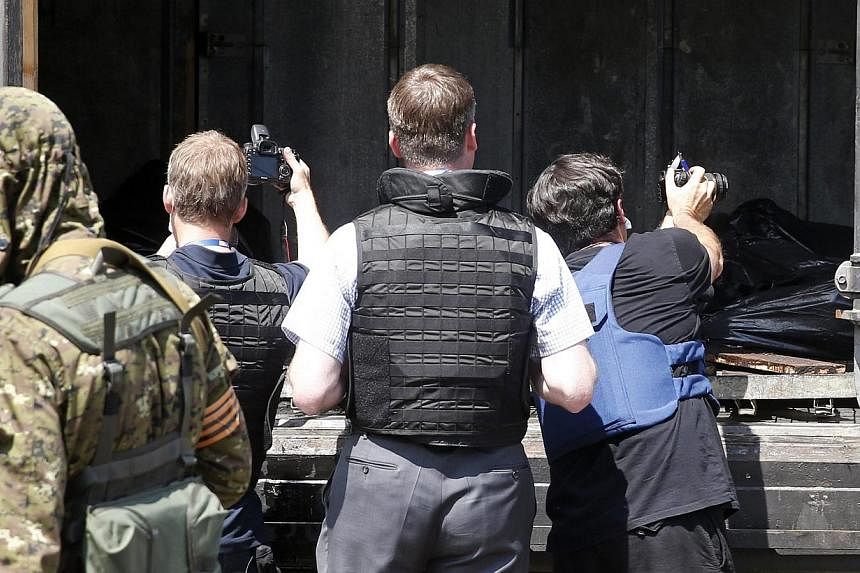In the tragic MH17 crash on Thursday, 193 Dutch victims were killed. The bodies, however, remain in the hands of the Ukrainian rebels.
Many of the corpses of the 298 people on board the flight from Amsterdam are still scattered across fields while others have been loaded by the rebels onto refrigerated wagons at a nearby railway station.
The Organization for Security and Co-operation in Europe (OSCE) were negotiating with separatists to bring a train containing bodies from the Malaysia Airlines disaster under Ukrainian government control so as to facilitate the reclaiming of the bodies by the Dutch.
What is the organisation and what does it do? Here are five things to know.
1. The OSCE has 57 participating states from Europe, Central Asia and North America.
The participating countries include the United States, United Kingdom, Netherlands, France, Spain, Germany, Russian Federation and Ukraine.
They also cooperate with Mediterranean and Asian Partners. The 11 partners include Algeria, Egypt, Israel, Afghanistan, Australia, Japan, the Republic of Korea, and Thailand.
2. One of OSCE's key partner organisations is the United Nations.
The organisation also works with the European Union, Council of Europe, and NATO. The OSCE considers itself a regional organisation and is an observer in the United Nations General Assembly.
The OSCE's Chairman-in-Office gives briefings to the United Nations Security Council routinely. It is currently led by the Swiss Foreign Minister, Didier Burkhalter.
3. The OSCE is the world's largest security-oriented intergovernmental organisation.
It has 550 staff members at its headquarters in Vienna, Austria and 2,300 field staff members. It has its roots in the 1975 Conference on Security and Co-operation in Europe held in Helsinki, Finland. The conference first began in 1973. The conference reached an agreement on the Helsinki Final Act, which was signed on Aug 1, 1975.
This document contained a number of key commitments on political, military, economic and environmental and human rights issues that became central to the so-called 'Helsinki process'.
4. The organisation concerns itself with a myraid of world issues.
Its mandate includes issues such as arms control and the promotion of human rights, freedom of the press and fair elections.
The organisation also tackles conflict prevention, fosters economic development, ensures the sustainable use of natural resources, and promotes human rights and fundamental freedoms.
It supports member states in combating all forms of racism, xenophobia, and discrimination.
5. It is present in many places.
Some of the places the OSCE has had missions, offices or centres include Albania, Bosnia and Herzegovina, Kosovo, Serbia and Ukraine.

